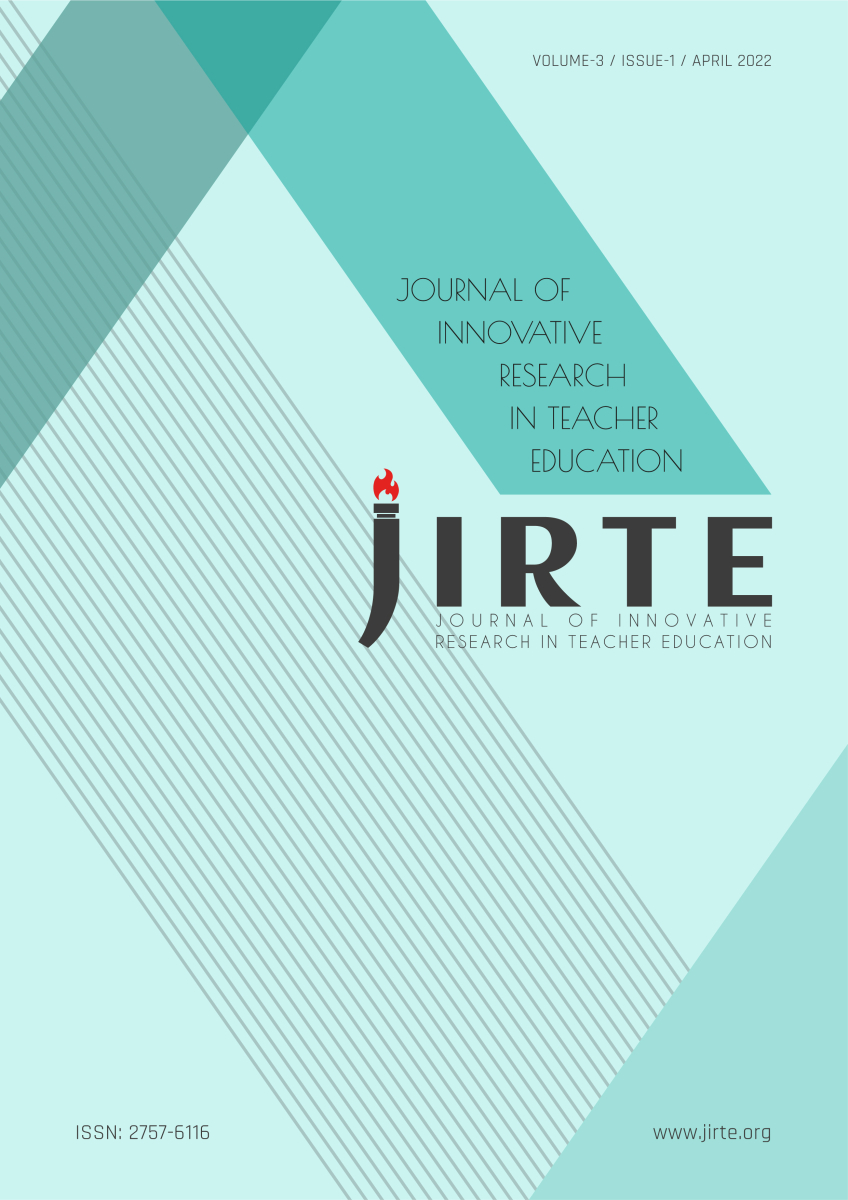Research article | Open Access
Journal of Innovative Research in Teacher Education 2025, Vol. 6(2) 82-90
The relationship between symbolic interactionism and mindfulness in the context of new media: implications for teacher education
pp. 82 - 90 | DOI: https://doi.org/10.29329/jirte.2025.1341.3
Publish Date: September 22, 2025 | Single/Total View: 0/0 | Single/Total Download: 0/0
Abstract
Integrating symbolic interactionism and mindfulness into teacher education enriches both theoretical understanding and practical application in contemporary classrooms, as new media tools are the main actors in shaping today’s students’ learning. This study examines the interplay between symbolic interactionism and mindfulness within the context of new media, exploring its implications for teacher education. Symbolic interactionism explains how individuals make sense of their social world through micro-level interactions and shared symbols. In parallel, mindfulness, the practice of conscious, non-judgmental awareness, offers individuals strategies to resist the emotional and cognitive manipulation often driven by digital media environments. Together, these frameworks provide educators with critical tools to decode student behaviors, develop inclusive pedagogical strategies, and cultivate emotional resilience in increasingly complex and symbolic classroom environments. This study argues that integrating symbolic interactionism and mindfulness in teacher education enhances teachers’ ability to respond thoughtfully rather than reactively, interpret student interactions meaningfully, and foster mindful and ethically grounded classroom cultures.
Keywords: Communication, Education, Symbolic Interactionism, Mindfulness, New Media
APA 7th edition
Eroglu, D.T. (2025). The relationship between symbolic interactionism and mindfulness in the context of new media: implications for teacher education. Journal of Innovative Research in Teacher Education, 6(2), 82-90. https://doi.org/10.29329/jirte.2025.1341.3
Harvard
Eroglu, D. (2025). The relationship between symbolic interactionism and mindfulness in the context of new media: implications for teacher education. Journal of Innovative Research in Teacher Education, 6(2), pp. 82-90.
Chicago 16th edition
Eroglu, Dilek Turan (2025). "The relationship between symbolic interactionism and mindfulness in the context of new media: implications for teacher education". Journal of Innovative Research in Teacher Education 6 (2):82-90. https://doi.org/10.29329/jirte.2025.1341.3
Baer, R. A. (2009). Self-focused attention and mechanisms of change in mindfulness-based treatment. Cognitive Behaviour Therapy, 38(S1), 15–20. https://doi.org/10.1080/16506070902980703
Benzies, K. M. Benzies, K. M., & Allen, M. N. (2001). Symbolic interactionism as a theoretical perspective for multiple method research. Journal of Advanced Nursing, 33(4), 541–547. https://doi.org/10.1046/j.1365-2648.2001.01680.x
Benzies KM, Allen MN. Symbolic interactionism as a theoretical perspective for multiple method research. J Adv Nurs. 2001 Feb;33(4):541-7. doi: 10.1046/j.1365-2648.2001.01680.x. PMID: 11251742.Blumer, H. (1969). Symbolic interactionism: Perspective and method. Englewood Cliffs, NJ: Prentice-Hall.
Bozkurt, V. (2009). Sociology in a changing world (4th ed.). Bursa: Ekin Publications.
Brown, K. W., & Ryan, R. M. (2003). The benefits of being present: Mindfulness and its role in psychological well-being. Journal of Personality and Social Psychology, 84(4), 822–848. https://doi.org/10.1037/0022-3514.84.4.822
Bulunmaz, B. (2014). New Media vs. Old Media: Who Won the War or Who Will Win? Karadeniz Teknik Üniversitesi İletişim Araştırmaları Dergisi. 4 (7), 22-29. https://dergipark.org.tr/tr/pub/e-kiad/issue/49298/629850#article_cite
Cooley, C. H. (1903). Human nature and the social order. Scribner’s.
Dönmez, Ş. (2018). The relationship between online game addiction, mindfulness and life satisfaction (Master’s thesis). Fatih Sultan Mehmet Vakıf University, Istanbul.
Evans, D. R., Baer, R. A., & Segerstrom, S. C. (2009). The effects of mindfulness and self-consciousness on persistence. Personality and Individual Differences, 47(4), 379–382. https://doi.org/10.1016/j.paid.2009.03.026
Fawns, T. (2022). An ecological critique of educational technology: Affordance, entanglement and sociomateriality. Technology, Pedagogy and Education, 31(1), 1–14. https://doi.org/10.1080/1475939X.2021.1992295
Fuchs, C. (2016). Social media: A critical introduction (I. Kalaycı & D. Saraçoğlu, Trans.). Notabene Publishing.
Gethin, R. (2011). On some definitions of mindfulness. Contemporary Buddhism, 12(1), 263–279. https://doi.org/10.1080/14639947.2011.564843
Howell, A. J., Digdon, N., & Buro, K. (2010). Mindfulness predicts sleep-related self-regulation and well-being. Personality and Individual Differences, 48(4), 419–424. https://doi.org/10.1016/j.paid.2009.11.009
Kabat-Zinn, J. (2005). Coming to our senses: Healing ourselves and the world through mindfulness. Hyperion.
Kaya, A. R. (1999). Media, society, politics. In K. Alemdar (Ed.), Media power and democratic institutions (pp. 24–39). Istanbul: Afa Publications.
Kellner, D., & Share, J. (2007). Critical media literacy, democracy, and the reconstruction of education. In D. P. Macedo & S. R. Steinberg (Eds.), Media literacy: A reader (pp. 3–23). New York, NY: Peter Lang.
Macionis, J. J. (2012). Sociology (V. Akan, Tran s.). Nobel Yayınları.
Meiklejohn, J., Phillips, C., Freedman, M. L., Griffin, M. L., Biegel, G., Roach, A., ... & Saltzman, A. (2021). Integrating mindfulness training into K-12 education: Fostering the resilience of teachers and students. Mindfulness, 12(2), 345–359. https://doi.org/10.1007/s12671-020-01515-5
Morin, A. (2011). Self-awareness part 1: Definition, measures, effects, functions, and antecedents. Social and Personality Psychology Compass, 5(10), 807–823. https://doi.org/10.1111/j.1751-9004.2011.00387.x
Noble, S. U. (2018). Algorithms of oppression: How search engines reinforce racism. NYU Press.
Polat, I. H. (2009). A new communication environment, a new media. In L. Baruh & M. Yüksel (Eds.), Interactive marketing in the changing communication environment (pp. 29–36). Doğan Kitap.
Redecker, C. (2020). European framework for the digital competence of educators: DigCompEdu. Publications Office of the European Union. https://data.europa.eu/doi/10.2760/159770
Scannell, P. (1992). Culture and power: A media. Sage.
Schmidt, S. (2011). Mindfulness in East and West—Is it the same? In H. Walach, S. Schmidt, & W. B. Jonas (Eds.), Neuroscience, consciousness and spirituality (pp. 23–38). Springer. https://doi.org/10.1007/978-94-007-2079-4_2
Snel, E. (2016). [Calm and attentive as a frog]. Istanbul: Pegasus Publications
Sorapure, M. (2004). Five principles of new media. Kairos: A Journal of Rhetoric, Technology, and Pedagogy, 8(2)p.1.
https://kairos.technorhetoric.net/8.2/coverweb/sorapure/five.pdf
Stella, M. (2010). A phenomenological study of a Shambhala Buddhist approach to working with afflictive emotions (Doctoral dissertation). ProQuest Dissertations Publishing.
Thera, N. (2008). The power of mindfulness. Kandy, Sri Lanka: Buddhist Publication Society.
Twenge, J. M., Haidt, J., Joiner, T. E., & Campbell, W. K. (2023). Increases in depressive symptoms, suicide-related outcomes, and suicide rates among U.S. adolescents after 2010 and links to increased new media screen time. Clinical Psychological Science, 11(1), 41–60. https://doi.org/10.1177/21677026221095804
Wallace, R. A., & Wolf, A. (2012). Contemporary sociological theory: Expanding the classical tradition (M.R. Ayas & L. Elburuz, Trans.). Doğu Batı Publications.
Wendt, R. F. (2020). Symbolic interactionism and the digital self: Identity in social media culture. Symbolic Interaction, 43(1), 122–137. https://doi.org/10.1002/symb.461
